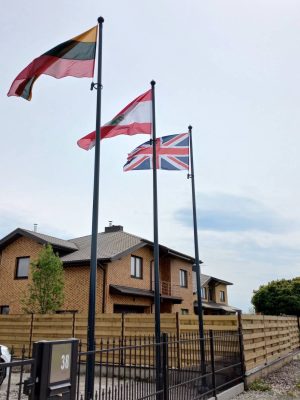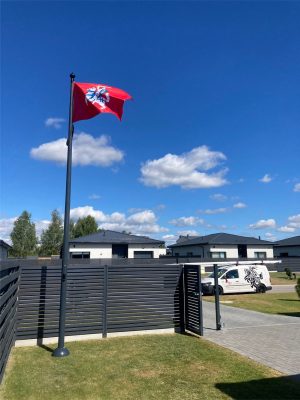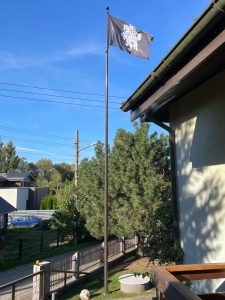Mūsų paslaugos
VIP paslauga
VIP paslauga „Parduotuvė atvyksta pas Jus į namus”.
Stiebų nuoma
Jei jums vėliavų stiebai nėra reikalingi nuolat, galime pasiūlyti ir jų nuomos paslaugą.
Stiebų priežiūra ir aptarnavimas
Nors vėliavų stiebams retai reikia remonto, vis tik ilgo eksploatavimo metu pasitaiko tam tikrų gedimų.
Kiti mūsų atliekami darbai
Neretai mūsų klientai pasiteirauja ar mes neatliekame dar kokių nors darbų.
Standartiniai vėliavų stiebai
-

Vėliavos stiebas iš stiklaplasčio 7m Balticmast
360,00 € – 610,00 € -

Vėliavos stiebas iš stiklaplasčio 6m Balticmast
320,00 € – 570,00 € -

Vėliavos stiebas iš stiklaplasčio 5m Balticmast
310,00 € – 560,00 € -

Vėliavos stiebas iš stiklaplasčio 8m Balticmast
380,00 € – 630,00 € -

Vėliavos stiebas iš stiklaplasčio 9m Balticmast
410,00 € – 660,00 € -

Vėliavos stiebas iš stiklaplasčio 10m Balticmast
500,00 € – 750,00 € -

Vėliavos stiebas iš stiklaplasčio 12m Balticmast
570,00 € – 820,00 € -

Vėliavos stiebas iš stiklaplasčio 14m Balticmast
2570,00 € – 2820,00 €










